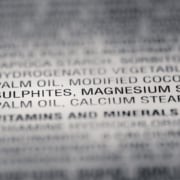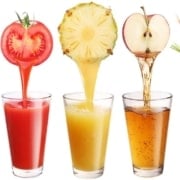Study Shows That Consumers Do Not Understand Clean Labels
Clean labels can be defined as an understandable declaration of what is inside the food that we eat. Jargon indicating artificial ingredients like preservatives and synthetic additives are banned from the ingredient list. As much as possible, only natural ingredients are used in making clean label foods.
This particular term has been very popular since last year, and many food manufacturers and retail distributors have joined the bandwagon of producing and selling more foods with clean labels. The purpose of clean labeling is noble, but it seems that only a few consumers understood what clean labeling is all about.
What People Think About Clean Labels?
What do people think of clean labels? Some consumers believe that products with clean labels mean “free from” products. Customers automatically believe that products that are gluten-free, fat-free, and sugar-free are synonymous with clean labeling. But this is not necessarily true. You have to take note that clean labels use natural and easily understood ingredients.
In fact, more than 30% of the American population think clean label products are free from synthetic ingredients while another 30% believes that they are made from organic and natural ingredients. The remaining population has no clue what clean label means.
The misconception about clean labeling can be dangerous. The assumption that clean label products are gluten-free, for example, can lead to severe allergic reactions especially to people who are suffering from celiac disease. Moreover, clean labeling does not protect individuals from the unknown hazards of food additives especially those used in the packaging of the food. The thing is that just because clean labeling omits the use of synthetic ingredients does not mean that the packaging is already safe. According to the Environmental Defense Fund, packaging may still contain hazardous chemicals like perchlorate and phthalates that can enter the food.
Setting A Clear Definition
Establishing a clear definition of clean labeling is imperative, and until there is an official definition from the US Department of Agriculture (USDA) or Food and Drug Administration (FDA), food manufacturers and retail distributors will continue to take advantage of the opportunity. If this continues, consumers will most likely be confused with the definition just like healthy and natural.
Unfortunately, both the USDA and FDA have not yet committed to devoting their time to giving a precise definition of the term. But although the government failed to make a definition for clean label, the Center for Science in the Public Interest (CSPI) has created its definition that clean label uses substances–even with long names– that are safe although some are not. Clean label products are also healthier than their non-clean label counterparts since they are made from real food rather than synthetic imitations. Still, the absence of artificial ingredients does not make them too healthy as they can still contain excess amounts of salt and sugar.
Inspired by www.fooddive.com




